Find a safe haven in Scotland
These two baronial beauties offer the opportunity to live like a laird.
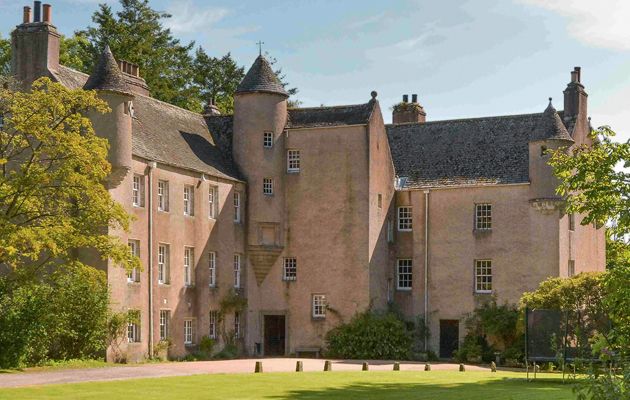

With the early autumn selling season more or less written off in Scotland due to the timing of the September referendum, it’s been a lacklustre year so far for country-house agents north of the border. But there’s still hope that last month’s announcement of the new Land and Buildings Transaction Tax (LBTT) regime that will replace Stamp Duty (SDLT) in Scotland from April 1, 2015 will encourage prospective buyers of high-value properties to complete their purchase before the April deadline, rather than face paying significantly more in LBTT than they would at current rates of SDLT.
'Under the present SDLT residential property tax system, a house costing between £1 million and £2 million carries a Stamp Duty liability of 5% of the purchase price. However, from next April, the new LBTT rate for houses sold for more than £1 million will kick in at 12%—more than double the current rate of SDLT,’ warns Robert McCulloch of Strutt & Parker.
Whether or not a tax hike of such magnitude will spur potential buyers into pre-emptive action in the coming months remains to be seen. Meanwhile, the launch onto the market of two important historic houses will test the underlying level of demand for the ultimate Scottish country retreat.
Warring Scottish clansmen have long fought to protect their family heritage—none more so than a 16th-century laird of Balbithan House at Kintore, near Inverurie, Aberdeenshire. Originally part of the estates of the Abbey of Lindores, the first House of Balbithan, known as Old Balbithan, stood on high ground above the River Don opposite Kintore and, from 1490, was owned by the Chalmers family. The story goes that, in the mid 1500s, a cannonball fired from the tower of Hallforest on the far side of Kintore fell into the courtyard of Old Balbithan, which so incensed the laird that he vowed to build himself a castle where ‘neither friend nor foe could find him’.
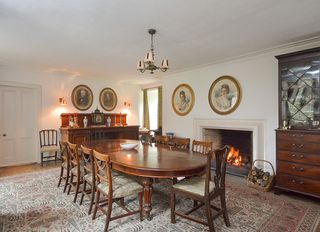
In about 1560, he built his new Balbithan House, at first a simple rectangular keep with a large round tower at the north-west corner, in a peaceful wooded valley two miles north-east of Kintore—a location so well hidden that, 500 years later, only very few people know of its existence. Now, following its launch onto the market for the first time in more than 50 years—at ‘offers over £1.2m’ through the Aberdeen office of CKD Galbraith (01224 860710)—secluded Balbithan House, listed Category A, is being introduced to a wider world.
Although history seems to have largely passed it by, the house has been owned by some of Scotland’s most influential families, several of whom have significantly altered it over the years.
The Chalmers, who held the estate until about 1696, carried out the first major remodelling in about 1600, with the removal of the tower and the extension of the house to the north. This was followed, in about 1630, by a substantial new wing built at right angles to the main house. In the early 18th century, Balbithan was owned by a branch of the Gordons, one of whom, Benjamin, was a distinguished soldier, who was made a general in 1801, at the age of 82.
Sign up for the Country Life Newsletter
Exquisite houses, the beauty of Nature, and how to get the most from your life, straight to your inbox.
Gen Gordon left the estate to his nephew, William Forbes of Skellater, who rebuilt the entire roof, removed the top floor and raised the ceilings of the second storey. Between 1760 and 1859, when Balbithan was sold to the Earl of Kintore, the interior was also altered, with large rooms being divided and passages added. In 1914, the estate was sold to the Duncans of Ardmurdo, who gave it up during the Second World War, after which it was owned by the Stotts of Crichie.
In 1960, Balbithan was acquired by Mary McMurtrie (the mother of the present vendor) who fell in love with the house and painstakingly restored it, transforming its gardens into a nursery, which she ran until retiring in the late 1990s.
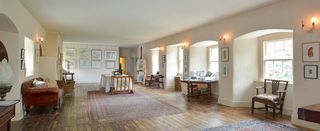
Although again in need of some updating, Balbithan is an impressive example of a Scots baronial house set in almost 10 acres of mature gardens and woodland, with four reception rooms and nine bedrooms spread over three floors, and surrounded by a varied landscape of hill, wood, river and farmland, all within spitting distance of the vast sandy beaches and picturesque fishing villages of the coast of Aberdeen.
Given that country-house prices in Scotland are relatively low compared with other parts of the UK, Jamie Macnab of Savills in Edinburgh (0131–247 3700) is confident that a recovering marketplace will adapt to the new property tax, which he considers almost benign compared with the potentially crushing burden of an annual ‘mansion tax’.
He quotes a guide price of ‘offers over £1.7m’ for another intriguing Scots Baronial mansion, the Category B-listed Keith Marischal House and Tower at Humbie, East Lothian, which sits in a picturesque rural setting overlooking the Lammermuir Hills, yet is within an easy 17-mile drive of Edinburgh city centre.
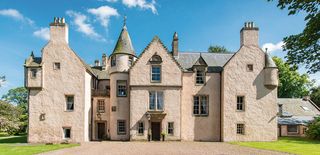
Imposing Keith Marischal House stands in more than 10 acres of peaceful gardens and grounds surrounded by rolling farmland and dates from the 12th century, when the reforming David I of Scotland granted lands north of Keith Water to his Marischal, a title and role that was held by the Keith family until 1745. The adjoining tower, referred to in the will of the 4th Earl Marischal in 1523, was extended into a house around a courtyard by his grandson, George, in 1589. In 1696, the estate was acquired by the Earl of Hopetoun, whose descendants made a number of improvements to the house, installing fine panelling and cornicing in the early 18th century and building a walled garden in about 1807.
In 1889, the property was sold to George Fraser-Tytler, the Secretary of the Bank of Scotland, who commissioned the architect Charles Kinnear to improve and extend the house, filling in the courtyard to create a new entrance. At the same time, the exterior was baronialised with the addition of faux turrets and crowstep gabling to match those of the tower. In 1953, the property was bought by the eminent architect Sir Robert Matthew, who divided the house and tower into their present configuration of two adjoining homes.
The present owner of Keith Marischal House, one of the new breed of ‘super-commuters’ who live in Scotland and work in London, bought the property in 2003, following the death of Sir Robert’s widow and, now that his children have grown up, is moving back south again. ‘Contrasting with Keith Marischal’s distinctive Scots Baronial appearance, the interior of the house combines old and new in a fresh dynamic way, with the main family accommodation on the first and second floors,’ says Mr Macnab, adding: ‘The tower, which has great potential as a holiday let, is presently connected to the main house via the second floor, but could be reconnected on the ground and first floors.’
-
 What's the name for a baby hedgehog? Country Life Quiz of the Day
What's the name for a baby hedgehog? Country Life Quiz of the Day10 questions to test your memory, nous and instinct for a wild guess.
By Toby Keel Published
-
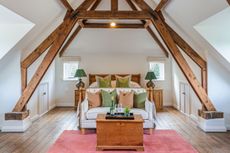 A five-bedroom family home that would host the perfect Henley party
A five-bedroom family home that would host the perfect Henley partyChurch Field in Fawley is spacious and magnificently well appointed, both inside and out.
By James Fisher Published
